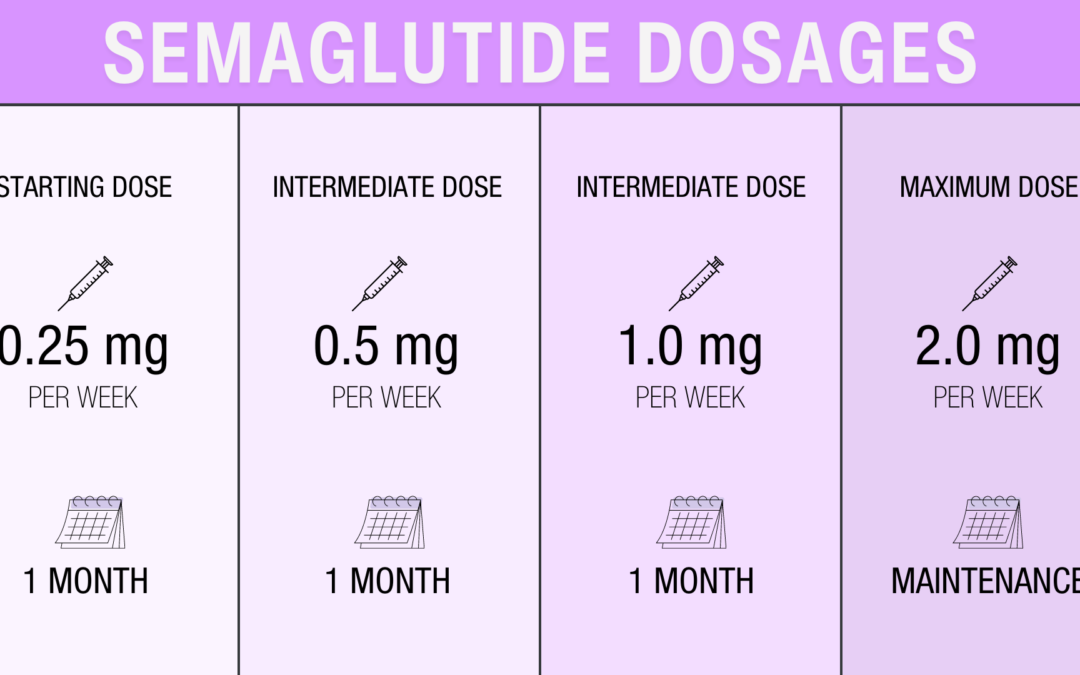Semaglutide has gained significant attention as a powerful weight loss medication. Originally developed for type 2 diabetes management, it has shown remarkable effectiveness in helping individuals lose weight. If you are considering using semaglutide for weight loss, understanding the semaglutide starting dose for weight loss and proper dosing guidelines is crucial. In this article, we will cover everything you need to know, including dosage instructions, administration methods, and answers to common dosage-related questions.
What is Semaglutide?
Semaglutide is a GLP-1 receptor agonist that mimics the natural hormone glucagon-like peptide-1 (GLP-1). It helps regulate appetite, slows gastric emptying, and improves insulin sensitivity. These effects contribute to significant weight loss when combined with a balanced diet and exercise.
Semaglutide Starting Dose for Weight Loss
The semaglutide starting dose for weight loss is typically 0.25 mg once per week. This low starting dose allows the body to adjust to the medication and helps minimize potential side effects such as nausea and gastrointestinal discomfort.
Also Read: What is Laser Lipo? A Complete Guide to Benefits, Process, and Results
Semaglutide Dosage Titration Schedule
The dosage of semaglutide is gradually increased over several weeks to enhance its effectiveness while reducing side effects. Below is the standard titration schedule:
- Week 1 to 4: 0.25 mg once per week
- Week 5 to 8: 0.5 mg once per week
- Week 9 to 12: 1 mg once per week (if well tolerated)
- Week 13 and beyond: 2.4 mg once per week (target maintenance dose for weight loss)
This titration process ensures that users experience the maximum benefits of semaglutide while minimizing side effects.
Understanding Semaglutide Dosage in Different Units
Some people may find it challenging to understand semaglutide dosage in units when using a syringe. To clarify:
- 20 units of semaglutide is how many mg? – 20 units typically correspond to 0.5 mg of semaglutide.
- How many mg is 40 units of semaglutide? – 40 units generally equal 1 mg of semaglutide.
It’s important to follow your healthcare provider’s instructions to ensure accurate dosing.
How to Administer Semaglutide
Using a Semaglutide Syringe
Semaglutide comes in pre-filled pens and vials that require proper dosage measurement. Understanding semaglutide syringe dosage is essential for accurate administration:
- Check Your Prescription: Ensure you have the correct semaglutide dose prescribed by your doctor.
- Prepare the Syringe: If using a vial, withdraw the correct amount using an insulin syringe.
- Inject Subcutaneously: Semaglutide is injected under the skin, usually in the abdomen, thigh, or upper arm.
- Rotate Injection Sites: Avoid injecting in the same spot repeatedly to prevent irritation.
Benefits of Semaglutide for Weight Loss
Many clinical studies have demonstrated the benefits of semaglutide for weight management. Some key advantages include:
- Significant Weight Reduction: Studies show that semaglutide users can lose up to 15% of their body weight over time.
- Appetite Control: Reduces hunger and helps individuals consume fewer calories.
- Improved Metabolism: Enhances insulin sensitivity and regulates blood sugar levels.
Potential Side Effects of Semaglutide
While semaglutide is effective, it can cause side effects, especially at the beginning. Common side effects include:
- Nausea
- Vomiting
- Diarrhea
- Constipation
- Stomach pain
Most side effects diminish as the body adjusts to the medication.
Who Should Not Take Semaglutide?
Semaglutide may not be suitable for everyone. Individuals who should avoid taking it include:
- Those with a history of thyroid cancer
- Individuals with severe gastrointestinal diseases
- Pregnant or breastfeeding women
- People allergic to semaglutide or any of its ingredients
Tips for Maximizing Weight Loss with Semaglutide
To achieve the best results with semaglutide, follow these tips:
- Follow the prescribed dosage and titration schedule
- Maintain a healthy diet with balanced macronutrients
- Stay physically active with regular exercise
- Monitor your progress and adjust lifestyle habits accordingly
- Stay hydrated to reduce nausea and improve digestion
Conclusion
Semaglutide is a highly effective weight loss medication, but understanding the correct semaglutide starting dose for weight loss is crucial. By following the recommended dosage schedule and administering it properly, individuals can achieve significant and sustainable weight loss results. If you are considering semaglutide, consult your healthcare provider to ensure it is the right choice for you.
By incorporating semaglutide dosage, semaglutide dose, semaglutide dosage in units, semaglutide syringe dosage, 20 units of semaglutide is how many mg, semaglutide syringe dosage, and how many mg is 40 units of semaglutide into your research, you can ensure a well-informed and safe weight loss journey.
Next Read: Glutathione Injections Side Effects: What You Need to Know
Frequently Asked Questions
1. What is the best time to take semaglutide?
Semaglutide can be taken at any time of the day, but it should be administered on the same day each week for consistency.
2. Can I increase my dose faster for quicker results?
No, increasing the dose too quickly can cause severe side effects. Always follow your doctor’s prescribed semaglutide dose.
3. Can semaglutide be used for long-term weight management?
Yes, semaglutide can be used long-term under medical supervision to maintain weight loss and improve metabolic health.
4. Is semaglutide safe for non-diabetics?
Yes, semaglutide has been approved for weight loss in non-diabetic individuals under the brand name Wegovy.
5. What happens if I miss a dose?
If you miss a dose, take it as soon as possible within 5 days. If more than 5 days have passed, skip the missed dose and resume your regular schedule.

